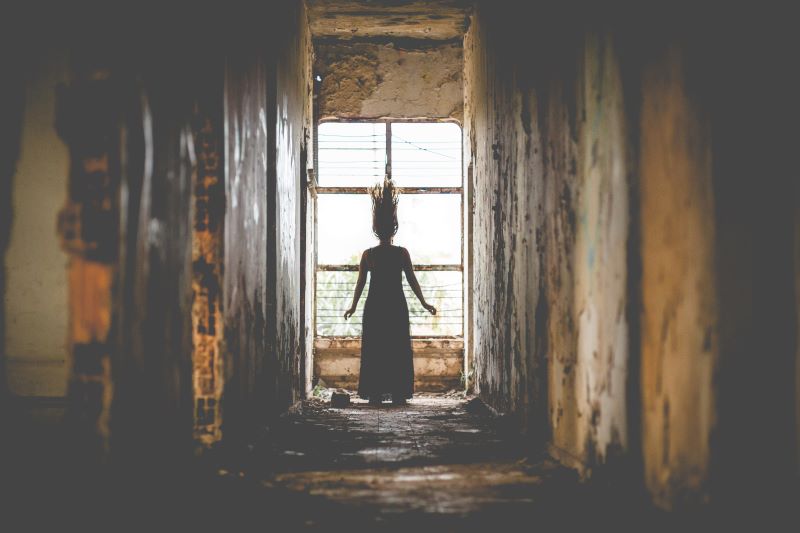Horror taps into our deepest fears, creating a dark and thrilling experience across film, literature, and art that fascinates by revolting us.
Though many know horror from movies, it has strong literary roots, from the playful Goosebumps series to the haunting Frankenstein. With countless subgenres, horror stories immerse readers by engaging all five senses, pulling them deeper into the character’s experience.
What is a Horror Story?
A horror story is a tale designed to evoke fear, suspense, and a sense of dread in the reader, often by exploring themes of the supernatural, the unknown, or human psychology.
7 Elements of a Horror Story Every Author Should Know
Atmosphere and Setting
The setting is crucial in creating a chilling atmosphere, often dark, isolated, or eerie, to evoke a sense of dread and unease.
Suspense and Tension
Building suspense keeps readers on edge, using pacing, foreshadowing, and anticipation to keep them guessing and heighten fear.
Relatable Characters
Characters that readers can relate to or empathize with make the story’s events feel more real and the horror more impactful.
Psychological Fear
Exploring characters’ fears, anxieties, and vulnerabilities taps into universal human emotions, making the horror feel personal and unsettling.
The Unknown or the Unseen
Keeping certain things hidden or unexplained creates mystery, leaving room for readers’ imagination, which can often be scarier than anything shown.
Pacing and Timing
Effective horror depends on timing—balancing moments of suspense with moments of intensity and using pacing to draw out or release tension.
Themes of Mortality and Vulnerability
Horror stories often explore themes of mortality, vulnerability, and survival, playing on the primal fear of death or loss of control.
Adding Sight Details to Your Horror Story
In horror, what you don’t see is often scarier than what you do see. The unknown and anticipation, like in Edgar Allen Poe’s and Nathaniel Hawthorne’s stories, create tension as readers fear the monster’s hidden presence. But a well-timed, bloody jump scare—used sparingly, as Stephen King does—can be just as terrifying, with Clive Barker’s work offering a perfect mix of subtle and shocking visuals.
Sound Elements in Horror Stories
In horror writing, sounds can often be scarier than visuals, creating an eerie atmosphere that’s harder to shake. Known as atmospheric horror, this approach uses creative audio cues, like unsettling noises in unexpected places.
Think beyond typical sounds—imagine a wind chime or ice cream truck jingle in the dead of night for a truly creepy effect.
For masterful examples of this style, check out Shirley Jackson’s We Have Always Lived in the Castle or The Haunting of Hill House.
Tactile Descriptions for an Effective Horror Story
To use touch and tactile descriptions effectively in horror, tap into sensations that make readers physically uncomfortable.
Think of unsettling moments, like feeling something slimy or someone standing too close, triggering that “skin-crawl” reaction. When writing body horror, let readers get comfortable with a character’s physical presence first, creating attachment to limbs or features, before introducing any harm—this makes the loss feel personal.
Techniques like the rubber hand experiment can help; make readers feel as if they’re experiencing touch themselves, and when the “hammer” falls, it hits harder. For inspiration, authors like Jack Ketchum, Chuck Palahniuk, and Cormac McCarthy use visceral, tactile descriptions that make readers squirm.
Smell Elements in Scary Stories
Smell is challenging to describe but strongly linked to memory, making it powerful in horror writing. Use familiar scents to create unsettling contrasts, like the smell of vanilla mixed with something ominous.
Juxtaposing pleasant and disturbing smells can make scenes more disturbing, as the mind tries to reconcile the two. For inspiration, check out Perfume: The Story of a Murderer by Patrick Süskind, which centers around a murderer’s obsession with smell.
What About You?
How do you use your senses in horror? What scenes scared you most as a reader, and what senses did they exploit? Share your tips and experiences below! And while you’re here, check Inkitt’s wide selection of horror novels!
We’re Open to Feedback! 🗣️📢
Do you have a topic you would like us to cover? A suggestion for the next big feature? Share your brilliance! Turn your idea into the next sensation! Let us know, and join us on Discord! 🙂





1 Comment
Thanks for the article. I loved, “Ever had someone stand too close on a train or bus, not breaking any rules, but just ruffling your hair with their breath?” and “like a graphic loss of limbs – make sure the audience has lived in those pieces before they’re lost.” Excellent points to keep in mind.